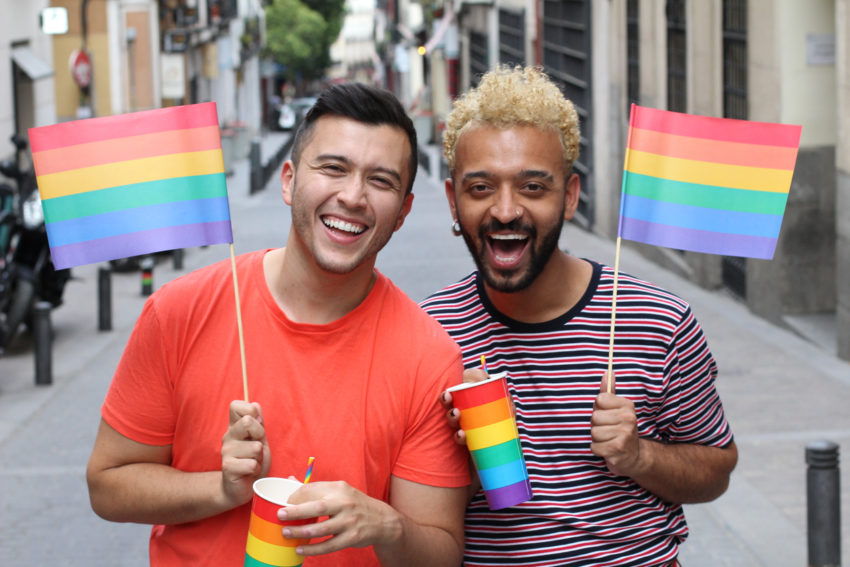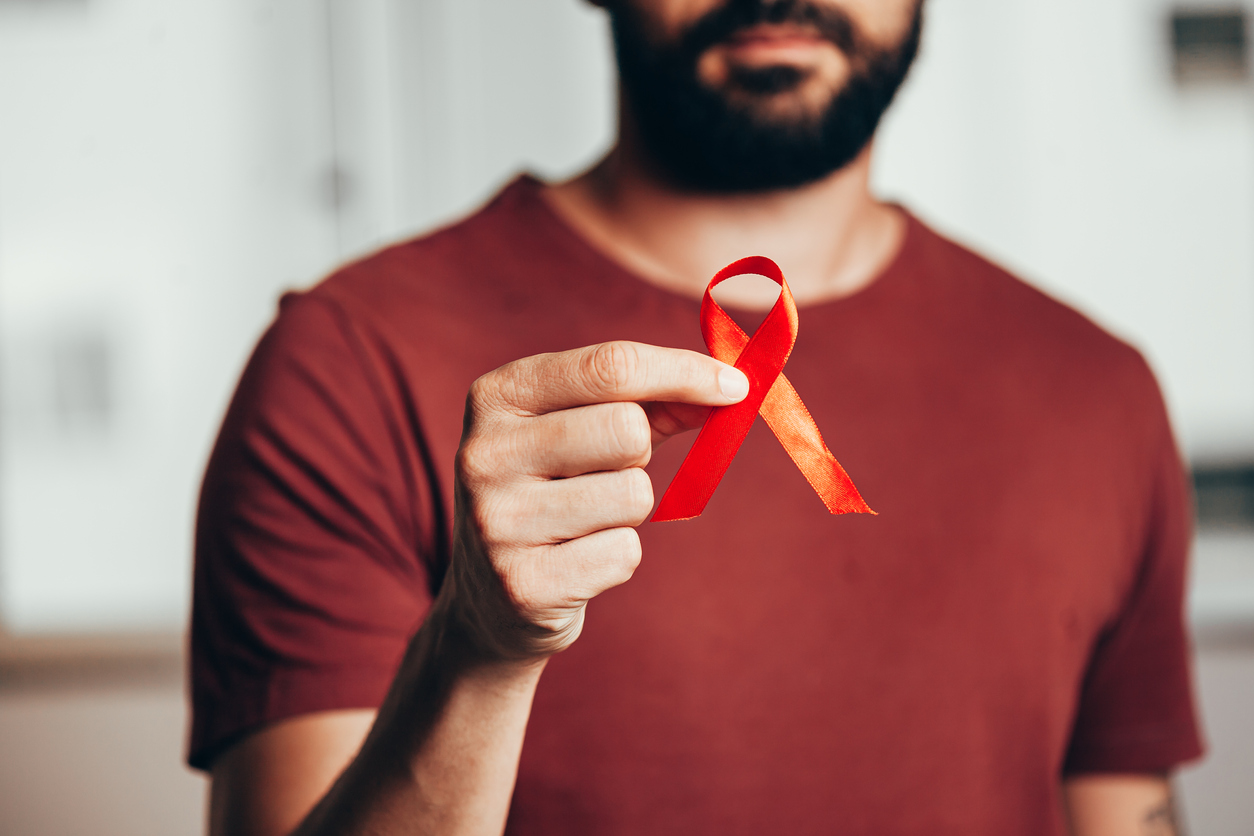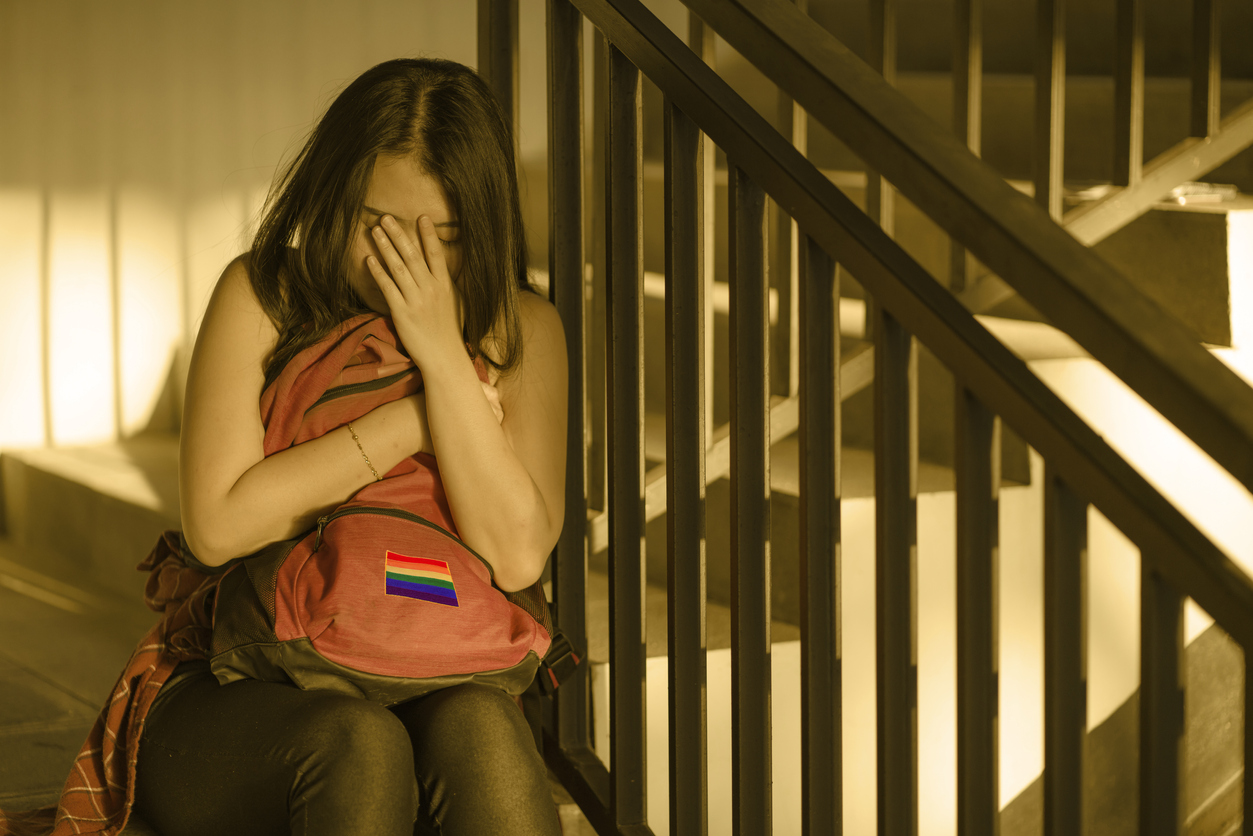
Share On Social!
June marks LGBTQ Pride Month, which celebrates equality and visibility for the LGBTQ community.
For LGBTQ Latinos, that means recognizing identity while raising awareness of disparities in HIV and AIDS treatment, mental health, and workplace discrimination.
For some, it also means honoring the victims of the 2016 Orlando shooting at Pulse Nightclub, where most of the 49 victims were LGBTQ Latinos.
Pride celebrations may be somewhat limited in various cities due to the ongoing COVID-19 pandemic.
But still, LGBTQ Latinos raise awareness and are proud.
“For sure, when you are with other people you feel empowered and you feel solidarity. But you cannot cancel true pride. It is the product of many victories and struggles,” said Pedro Julio Serrano, a human rights activist from Puerto Rico, according to NBC. “We carry pride within ourselves — and no one can take that away.”
Disparities in HIV/AIDS Treatment and LGBTQ Latinos
HIV and AIDS are a serious threat to Latinos, particularly in the LGBTQ community.
Latinos make up about 26% of new HIV diagnoses, despite being 18.5% of the population, according to the CDC.
About 85% of Latinos who have HIV/AIDS are gay or bisexual men, according to a 2020 research report from ViiV Healthcare, an organization focused on fighting HIV.
“Despite progress made to decrease HIV diagnoses in the US overall, disparities still exist — particularly for people of color,” said Marc Meachem, Head of US External Affairs at ViiV Healthcare, according to their website. “Further, while we have medicines to effectively treat and manage HIV, one-in-three Latino men living with HIV are not virally suppressed. The unique experiences of the Latinx community necessitate community-driven approaches to close gaps in care in order to meet the national goal of ending the HIV epidemic by 2030.”
Discrimination and other systemic barriers often prevent LGBTQ Latinos from receiving adequate health care and HIV treatment.

“Class disparities, such as housing and income instability, employment barriers and integrating into a new city, severely complicate men’s ability to achieve health and obtain and utilize prevention, care and treatment services,” according to the research report from ViiV Healthcare.
The stigma against AIDS and against the LGBTQ community also prevents many Latinos from seeking treatment.
“While many men [in the study] described experiencing homophobia, biphobia and transphobia as a negative force in their lives, men also described discrimination, ostracism and violence stemming from their race, skin color, accent, immigration and documentation status, nationality, HIV status and age,” according to the research report from ViiV Healthcare.
Many advocates point out how the HIV/AIDS crisis parallels how the COVID-19 pandemic has disproportionately affected Latinos.
“There is a sad resonance in the way that HIV/AIDS originally impacted the Latinx LGBTQ population, and what is happening with coronavirus now,” said Dr. Rafael Campo, a teacher and doctor at Harvard Medical School, according to NBC. “How these two very different viruses impact communities of color is part of the symmetry.”
More must be done to provide Latinos access to HIV/AIDS treatment, such as spread awareness of the available HIV treatment and screening options and fight the stigma against AIDS.
Mental Health Disparities for LGBTQ Latinos
Unfortunately, many LGBTQ Latinos suffer from mental health issues.
Latino LGBTQ youth are 30% more likely to attempt suicide than non-Latino LGBTQ youth, according to a recent study by the Trevor Project, a non-profit focused on suicide prevention for LGBTQ youth.
Part of the reason is the stress-related stigma, discrimination, and difficulties expressing gender and sexual identity, which many LGBTQ people of color face.
But, unfortunately, Latino LGBTQ youth also often deal with the stress of immigration, which can take a heavy toll on a person’s mental health.
“The higher risk of attempting suicide among Latinx LGBTQ youth compared to non-Latinx LGBTQ youth can be explained by greater worries about themselves or family being detained or deported due to immigration policies,” according to the Trevor Project.
Beyond the typically mental health experience of Latinos, Latino LGTBQ youth face an even more difficult path, according to the data from the Trevor Project.
Here are some key findings:
- 17% of Latino LGBTQ youth attempted suicide in the last year
- Transgender and nonbinary Latino youth had more than twice the odds of attempting suicide
- Latino LGBTQ youth who completed the survey in Spanish were at 84% increased risk of attempting suicide
- Latino LGBTQ youth who were struggling to meet basic needs had more than twice the odds of attempting suicide
- Almost half (47%) of Latino LGBTQ youth worried “a lot” or “sometimes” about immigration issues related to detainment or deportation
“Latinx LGBTQ youth who worry a lot about themselves or a family member being detained or deported due to immigration policies were at double the risk of attempting suicide compared to Latinx LGBTQ youth who never worry about it,” according to the Trevor Project.

Providing culturally competent mental health services can make an important difference in treatment for Latinos.
In Orlando, after the Pulse massacre, centers across the city received grants to provide mental health services and HIV testing to LGBTQ Latinos, particularly those affected by the shooting.
“The [Orlando United Assistance] center provides what state Rep. Carlos Guillermo Smith calls ‘culturally competent care’ – where the case managers share many of the same lived experiences as the clients they’re serving. They connect clients to medical and mental health care, legal services, housing and more, though they just as often provide comfort and a friendly ear to those who need it,” writes Scottie Andrew, according to CNN.
The aftermath of the Pulse shooting had a strong impact on the Latino LGBTQ community in Orlando, and places like the Orlando United Assistance Center are helping those affected heal.
“Some survivors of the shooting lived in poverty and couldn’t access resources without the assistance of the center, said [Joél Junior] Morales, [director of operations at the LGBT+ Center]” Andrew wrote, according to CNN. “Some victims were undocumented and felt they couldn’t trust government assistance. Other victims were outed to their families simply by being at the bar on the night of the shooting and needed to navigate that trauma, too.”
Disparities in Workplace Discrimination for LGBTQ Latinos
People of color in the LGBTQ community often face hardship and discrimination.
Some LGBTQ people of color say that sexual orientation is one of the biggest reasons they’re discriminated against in the workplace, according to a new survey by the IBM Institute for Business Value and Oxford Economics.
Here are some of the key findings from the survey:
- 36% of LGBTQ Latinos said they believed sexual orientation was the main reason for the discrimination they experienced on the job
- 57% of LGBTQ Latinos believed people who share the same race, gender and sexual orientation as them are less successful than Americans overall
- About 9 in 10 workers say their employer or organization should be a stronger public supporter of LGBTQ inclusion
One of the main reasons behind this may be the recent wave of anti-LGBTQ legislation from various states.
“In the United States … we still don’t have consistent federal civil right protections on the basis of sexual orientation and gender identity,” said Deena Fidas, managing director and chief program and partnerships officer for Out & Equal Workplace Advocates, according to USA Today. “The LGBTQ+ community simply doesn’t have that.’’
How Can We Help LGBTQ Latinos?
LGBTQ Latinos face many disparities when it comes to physical, mental, and social wellbeing.
No one deserves to suffer from these issues.
One way you can help is to see what health resources are available in your community. Download a health equity report card to see how your area stacks up in housing, transit, poverty, health care, food, and other health equity issues compared to your state and nation.
You can also take these 10 steps to improve mental health services for Latino immigrants:
- Listen to the Stories of DACA Recipients.
- Explore the Impact of the COVID-19 Pandemic.
- Learn the Basics of Immigration Policy and Stay Attuned to Changes.
- Identify and Challenge Your Own Biases and Misconceptions About Immigrants.
- Review Existing Models and Recommendations for Clinical Work with Immigrants.
- Integrate Trauma-Informed Care and Multicultural Competence in Your Clinical Style.
- Strengthen Psychological and Behavioral Coping Strategies.
- Foster Immigrants’ Wisdom and Resilience.
- Connect with Community Resources: Legal Support, Educational Programs, Financial Help, Health Services, Advocacy and Activist Groups.
- Engage in Continuing Education, Supervision, Consultation, and Professional Support.
Showing support for LGBTQ youth is vital, according to Amy Green, the study lead and director of research at The Trevor Project, according to NBC News.
“The simple act of acceptance and letting kids express their identity can be incredibly powerful,” Green said.
We can also do our part in helping end the stigma against people in the LGBTQ community, especially those affected by AIDS.
“Many of us think we are alone when facing life’s trials. In the moment, it can be hard for us to realize that there are many who have experienced or are experiencing the same challenges,” Meacham said, according to Al Día News. “Elevating the voices of community through research and sharing those voices in cultural settings (plays, stories, poetry) is a more robust way to engage people and communities in facing and addressing the issues they face.”
By The Numbers
3
Big Excuses
people use to justify discriminatory behavior



